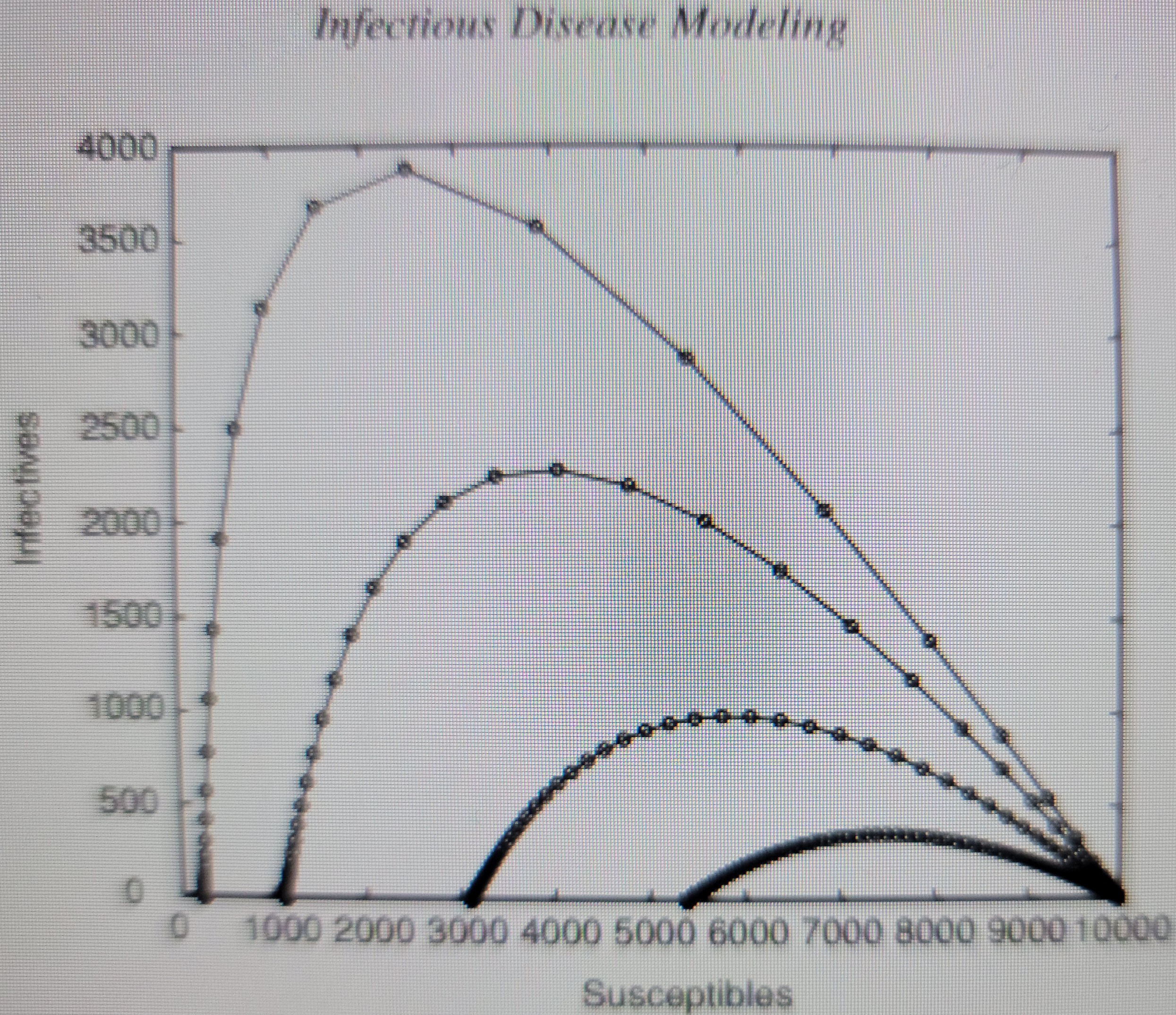Question
7.2.6. In a population of 10,000 individuals, a new disease strikes. Once ill, an infective is contagious for 31 3 days. a. Give the removal
7.2.6. In a population of 10,000 individuals, a new disease strikes. Once ill, an infective is contagious for 31 3 days.
a. Give the removal rate ? , assuming time steps of 1 day.
b. Examine the phase plane in Figure 7.3 for four possible epidemics with the value of ? determined above. Estimate the relative removal rate ? and the transmission coefficient ? for each of the four epidemics graphed. Then find the basic reproduction numbers for each of the epidemics. Give your answers in a table.
c. Extend your table in part (b) by including the number of time steps T until the epidemic peaks, and the number of susceptibles S? = lim t?? St remaining after the disease dies out. Explain the effect of increasing ? on the virulence of an epidemic. Does this make biological sense?

Step by Step Solution
There are 3 Steps involved in it
Step: 1

Get Instant Access to Expert-Tailored Solutions
See step-by-step solutions with expert insights and AI powered tools for academic success
Step: 2

Step: 3

Ace Your Homework with AI
Get the answers you need in no time with our AI-driven, step-by-step assistance
Get Started


